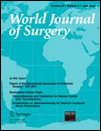Evaluation of Postoperative Radioactive Iodine Scans in Patients who Underwent Prophylactic Central Lymph Node Dissection
Abstract
Background
Prophylactic central lymph node dissection (CLND) accompanying total thyroidectomy for papillary thyroid cancer (PTC) remains controversial. Our hypothesis is that CLND may help select patients who benefit from postoperative radioactive iodine (RAI).
Methods
A total of 119 patients who were clinically node-negative underwent total thyroidectomy/bilateral CLND for papillary thyroid cancer (PTC) > 1 cm during 2002–2010. Pathology results, RAI results, and outcomes were compared between node-positive (NP) and node-negative (NN) patients.
Results
NP and NN patients were similar in age, gender, tumor size, and MACIS score. Median number of nodes excised was six. The rate of permanent hypocalcemia was 1.7% without permanent recurrent laryngeal nerve injuries. Thirteen of 52 (25%) NN patients and 24 of 67 (36%) NP patients had suspicious nodes by intraoperative inspection. The node assessment negative predictive value was 75%; positive predictive value was 36%. Fifty-six percent (67/118) were NP; 100 patients were treated with RAI. Fourteen of 62 NP patients had abnormal postoperative RAI scans aside from the thyroid remnant versus 4 of 38 NN patients (23 vs. 11%, p = 0.18). Median 1-year stimulated thyroglobulin (Tg) level was 0.0 for both (range 0.0–1.2, NN; 0.0–22.7, NP; p = 0.1). NP patients received higher doses of RAI (150 vs. 30 mCi, p < 0.001). Rate of recurrent or persistent disease was 3.4%.
Conclusions
Few node-negative patients have abnormal RAI scans outside of the thyroid bed. Node-positive patients had greater variability in stimulated 1-year Tg levels after higher doses of RAI. CLND may identify the patients most likely to have persistently elevated stimulated Tg after initial therapy for PTC.




